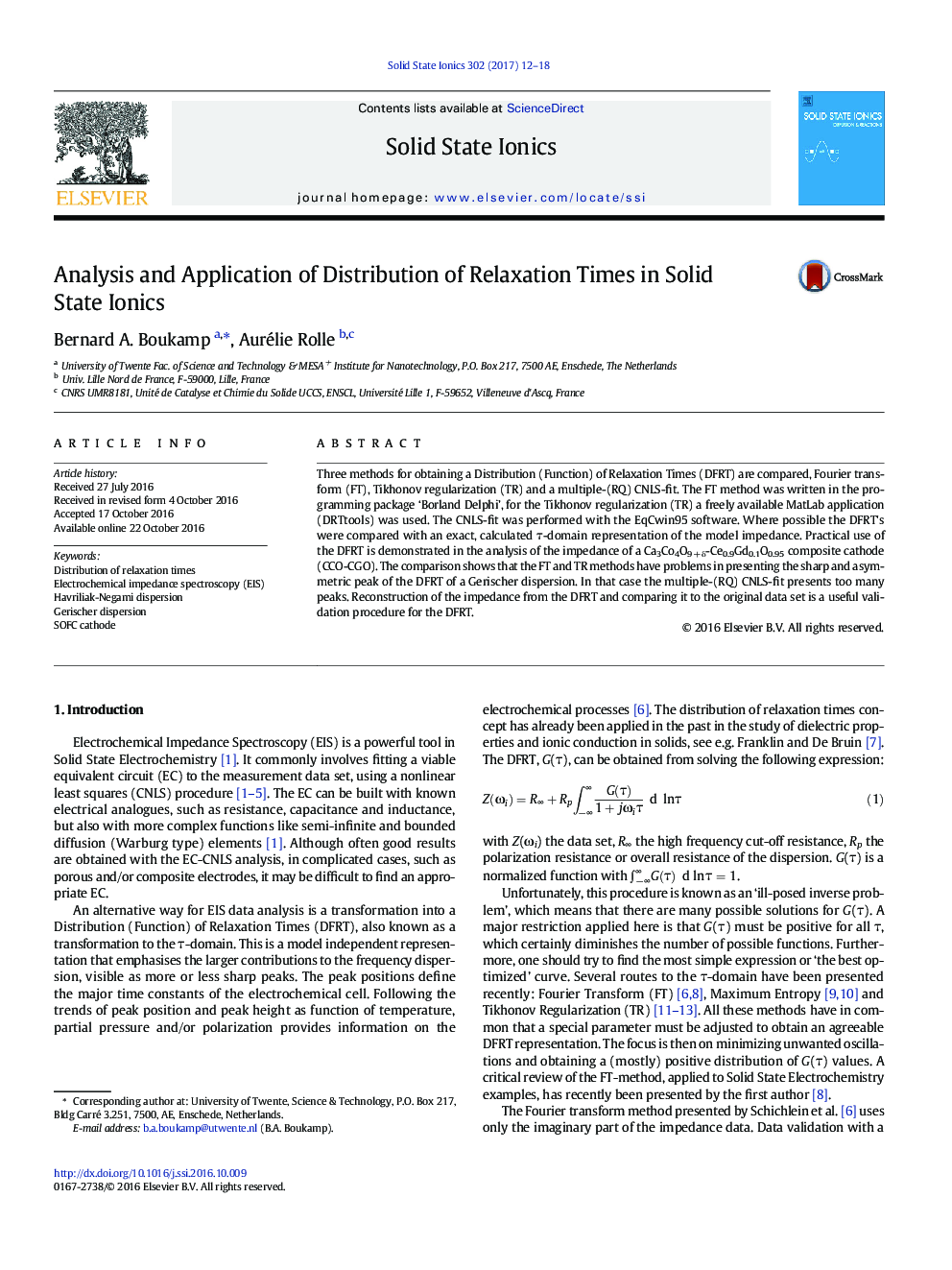| Article ID | Journal | Published Year | Pages | File Type |
|---|---|---|---|---|
| 5150427 | Solid State Ionics | 2017 | 7 Pages |
Abstract
Three methods for obtaining a Distribution (Function) of Relaxation Times (DFRT) are compared, Fourier transform (FT), Tikhonov regularization (TR) and a multiple-(RQ) CNLS-fit. The FT method was written in the programming package 'Borland Delphi', for the Tikhonov regularization (TR) a freely available MatLab application (DRTtools) was used. The CNLS-fit was performed with the EqCwin95 software. Where possible the DFRT's were compared with an exact, calculated Ï-domain representation of the model impedance. Practical use of the DFRT is demonstrated in the analysis of the impedance of a Ca3Co4O9 + δ-Ce0.9Gd0.1O0.95 composite cathode (CCO-CGO). The comparison shows that the FT and TR methods have problems in presenting the sharp and asymmetric peak of the DFRT of a Gerischer dispersion. In that case the multiple-(RQ) CNLS-fit presents too many peaks. Reconstruction of the impedance from the DFRT and comparing it to the original data set is a useful validation procedure for the DFRT.
Related Topics
Physical Sciences and Engineering
Chemistry
Electrochemistry
Authors
Bernard A. Boukamp, Aurélie Rolle,
